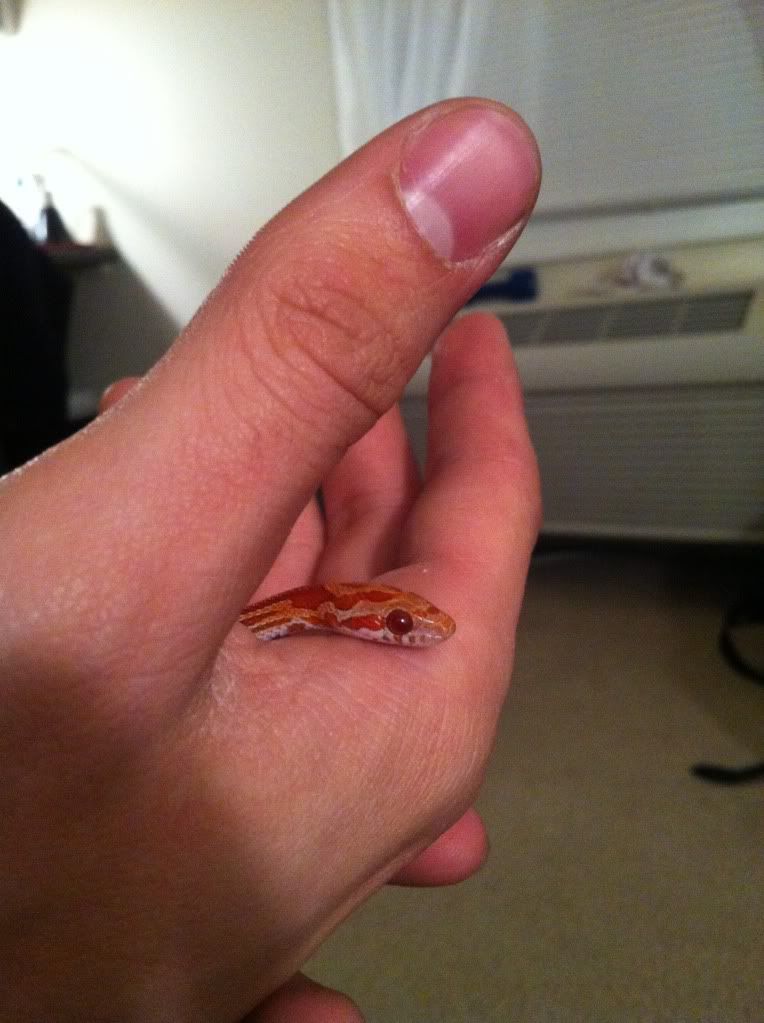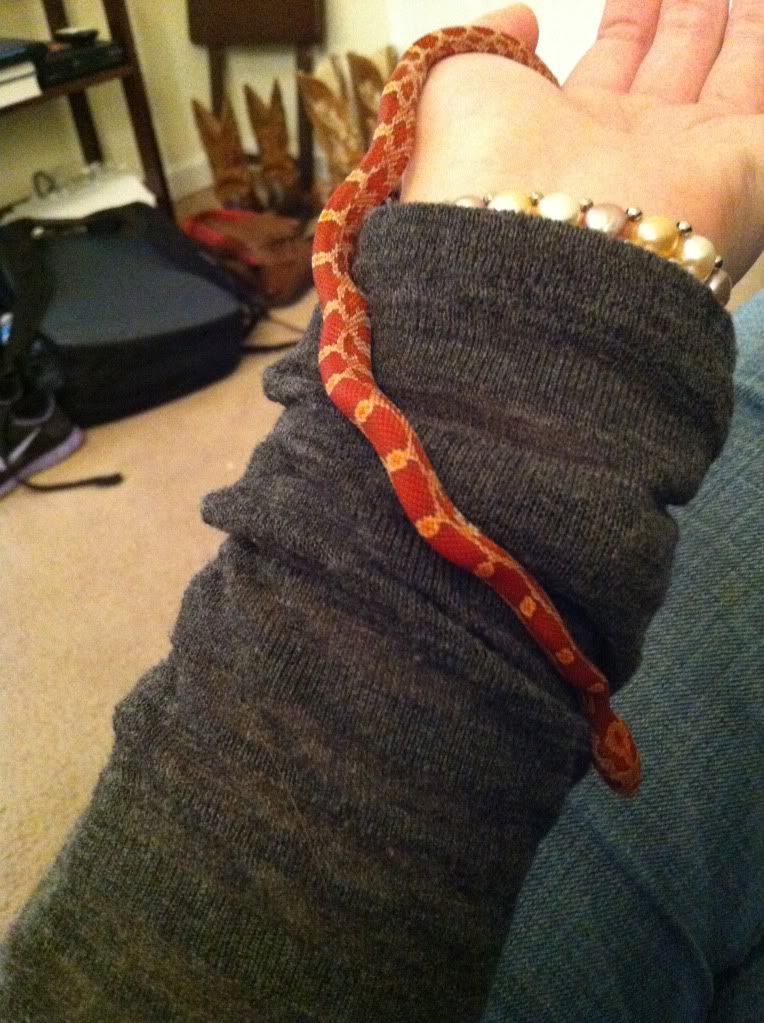You are very welcome, ShelbyScott. And evidently a quick learner, LOL.
I must say, with all humility, that Shiari in post #7, said very much of the same thing I did in my later post, and she said it first. You said you were new to the world of morphs, and she provided a beautiful and articulate answer, in that context.
Note, cornsnakes have 36 chromosomes.
In almost all vertebrates that reproduce sexually (there are exceptions : asexual, parthenogenesis in some whiptail and racerunner lizards, and other oddballs in the animal world), a normal (without errors) new individual receives receives the exact same number from the mother and from the father. In this case, a cornsnake fertilized egg receives 18 chromosomes from its mother and 18 from its father. To total 36 in a healthy new young cornsnake.
So it receives either an N, a, or u from its mother. (One of these three gene alleles, in this example.)
And it receives either an N, a, or u from its father.
These gene pairs, NN, Na, Nu, ua, uu, or aa are called the genotype.
They work together (or one is dominant) to express a phenotype : what the snake is. "Looks like."
Chris has, in post #12, shown you an excellent photograph of the three phenotypes.
Looking at many many pictures will help you see how amel and ultra work together to produce visual phenotypes.
These, personally, are two of my several favorite genes, so talking about them is kind of fun.
Many people will tell you that an ultramel will look, in areas that in a normal cornsnake would be black, like the color of melted candle wax drippings. That is a very good short description.
Normal (NN, Nu, Na) cornsnakes have the most (normal) amount of melanin. Then ultra (uu), followed by ultramel (ua), then followed by amel (aa), of course, individuals of which have no melanin.






